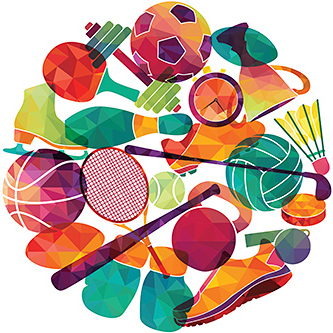When athletes are faced with injury, the effects can potentially extend beyond those that are physical in nature. Sometimes, they take a toll mentally as well.
Depending on the athlete and the nature or extent of the injury, these mental reactions to injury can include changes in appetite, sleep issues, irritability, depression, a lack of motivation, and even alienation, according to the American Academy of Orthopaedic Surgeons. And if these issues become excessive, anger and rage may manifest, causing the athlete to experience emotional outbursts or even struggle with substance abuse issues.
Really Listen to Their Concerns
"I think one of the most important things we as providers can do is listen," says Jay Greenstein, DC, CCSP, CKTP, CGFI, team provider for the NFL's Washington Redskins cheerleaders and Arena Football League's Washington Valor. "If you are truly listening to what the athlete is saying and evaluating how they're saying it, you can understand what their true needs are."
Dr. Greenstein stresses that there is always a balance between asking too much and getting to the heart of the matter. There is also an obligation to keep the athletic trainer in the loop. Most importantly, if you are authentically curious and really listen to what your athletes have to say, they're more inclined to trust you. "It's really about empathy," says Dr. Greenstein.
Help Them See the Injury for What It Is
"For young athletes, I remind them that what they do today for their body will determine the longevity of their careers," says Sabrina Atkins, DC, team chiropractor for the NBA's Orlando Magic and the Orlando Ballet. "For the older and more seasoned athletes, there is a gentle reminder that the recovery process takes a little longer."
Taking this approach helps the athlete become more reassured that they're "doing the right thing by taking care of the injury and letting it heal," Dr. Atkins says. To help them understand better, she reminds them what it was like when they first got into their sport; the amount of time and energy it took to achieve a level of proficiency and confidence. That's what will happen with this injury, too.
Inform Them the Injury Can Actually Help Build Strength
"I talk to [the athlete] about using the injury as a way to strengthen not only the area that is injured, but everything else," says Jason T. Levy, DC, ART, CCSP, CKTP, team chiropractor for the New York Jets (NFL), New Jersey Devils (NHL) and New York Red Bulls (MLS). For instance, Dr. Levy treats a high-level triathlete who blew out her ACL. Yet after rehabbing, she is way ahead of where she should be.
This is an issue Dr. Levy says he sees in elite athletes – they are weak in certain areas, but compensate to make up for it. However, rehabbing from an injury gets them to build up those areas instead and, "a lot of times, they come back better than ever," he says.
Help Them Tap Back Into Their Personal Power
Another approach Monte Hessler, DC, CCSP, says works well is helping athletes tap back into the power they felt when they weren't injured. "It's important to visualize and feel what it was like when they were at their best," says Dr. Hessler, team chiropractor for the NBA Phoenix Suns, PGA Tour chiropractor, and chiropractic consultant for the San Francisco Giants (MLB).
"It helps if the athlete recalls all of the sensory feelings they had when they were at the top of their game and having fun," Dr. Hessler says. So, he helps remind them how it felt to make that perfect play, who they were with, where they were at the time, and any other details they can recall using the five senses to make those visualizations more real.
Editor's Note: Part 2 of this article is scheduled to appear in the October issue.
Click here for more information about Spencer Baron, DC, DACBSP.
Click here for more information about Christina DeBusk.





